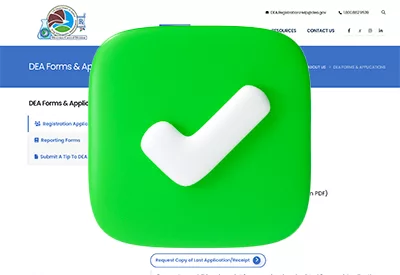Home » DSM-5: Clinical and Financial Implications
DSM-5: Clinical and Financial Implications
June 1, 2013
From The Carlat Addiction Treatment Report
Norman G. Hoffmann, PhD
The new DSM-5 will change the way clinicians diagnose substance use disorders (SUD) and could have far-reaching consequences for patients seeking treatment and clinicians and organizations offering that treatment. Various proposals for addiction were batted around during the DSM-5 revision process. The final version changed the diagnostic criteria for SUD from the time-honored categorical designations—abuse and dependence—into a dimensional construct involving mild (MiSUD), moderate (MSUD), and severe (SSUD) addiction.
We now have a single set of 11 criteria for diagnosing patients with addiction. Here’s the breakdown for severity:
The other big change in DSM-5 is that the American Psychiatric Association dropped the legal problems criterion and replaced it with a criterion for craving or compulsion to use (Diagnostic and Statistical Manual of Mental Disorders, Fifth Edition. Arlington, VA: American Psychiatric Association; 2013, p. 483). The rationale for dropping the legal problems criterion was based on studies from general populations that found that those with addiction rarely endorsed legal problems (Hasin D et al, Drug Alcohol Depend 2012;122(1–2):28–37). Even when the criterion was fulfilled, it rarely altered the final diagnosis (Hasin op cit; Edwards AC et al, Alcohol Clin Exp Res 2013; 37(3):443–451).
Diagnosing Addiction
Every time the DSM is updated, there are concerns about pathologizing normal human experiences and behaviors (see, for example, Frances A, Saving Normal. New York: HarperCollins; 2013). In keeping with these fears, some studies suggested that DSM-5 would tag more people with a diagnosis of addiction compared to older editions of DSM (Agrawal A et al, Addiction 2011;106(11):1935–1943; Peer K et al, Drug Alcohol Depend 2013;127(1–3):215–219).
However, existing data from adult correctional and juvenile justice populations paint a much different picture. In these high-risk populations, a substantial proportion of those previously diagnosed with substance abuse no longer received an addiction diagnosis with the new criteria (Kopak AM et al, Int J Offender Ther Comp Criminol 2013; in press). If DSM-5 underdiagnoses addiction in these settings, one could reasonably ask how it could overdiagnose it in the general population where the range and intensity of problems is typically less severe. The answer may be that dropping the legal problems criterion may have a disproportionate impact for correctional populations.
Substance Use, Abuse, and Dependence
Studies have compared DSM-IV-TR and DSM-5 criteria for disorders involving alcohol, cocaine, and cannabis in a state prison population (see, for example, Kopak AM et al, Subst Use Misuse 2012;47(12):1328–1338). These studies were based on the Substance Use Disorder Diagnostic Schedule-IV (SUDDS-IV), a structured diagnostic interview that covers DSM-IV-TR criteria and has items that approximate DSM-5. In general, findings for both versions of DSM were relatively similar for all three classes of substances. Much the same was found in adolescents in the juvenile justice system using the Practical Adolescent Dual Diagnostic Interview (PADDI) (Malone MG and Hoffmann N, (Under Review), A Comparison of DSM-IV vs. Proposed DSM-5 Substance Use Disorder Diagnoses in Adolescent Populations).
Keep in mind that substance users in these settings often meet criteria for substance dependence and thus have sufficient problem severity to be classified as having a moderate or severe substance use disorder by DSM-5. Thus high risk populations are likely to differ substantially from general populations in terms of problem severity.
Things appear to shake out much differently for inmates with a diagnosis of substance abuse. For alcohol, almost a third of both male and female inmates who met criteria for abuse failed to receive a DSM-5 diagnosis (Kopak 2013 op.cit). With cannabis, the proportion is similar for males; in women, about 25% meeting abuse criteria no longer receive a diagnosis (Kopak 2012 op.cit). The changes are most dramatic for male cocaine users: more than half of those with an abuse diagnosis no longer meet DSM-5 criteria for addiction (Proctor SL et al, Psychol Addict Behav; in press).
Relatively similar findings were found in juvenile justice settings. Some of the so-called “diagnostic orphans”—those who fulfill two dependence criteria but do not meet criteria for abuse—received a diagnosis, but almost a third of abuse cases no longer met DSM-5 criteria for addiction. As with adults, those with a dependence diagnosis were typically retained and classified as SSUD (Malone op.cit).
The vast majority of those who received no diagnosis with DSM-IV-TR still receive no diagnosis with DSM-5. The one notable exception is diagnostic orphans, who will now be classified as MiSUD. On the flip side, most of those with a DSM-IV-TR dependence diagnosis will fall into the SSUD category: more than 80% of those meeting criteria for alcohol dependence (Kopak 2012 op.cit) and more than 90% of those meeting criteria for cocaine or cannabis dependence (Kopak 2012 op. cit; Proctor op.cit).
Dropping Legal Problems
As one might expect, in correctional populations, dropping the legal problems criterion and requiring a minimum of two other criteria for addiction accounts for the majority of people reclassified as not having a SUD. This is particularly true for those arrested for driving under the influence (DUI) or driving while intoxicated (DWI). Among first-time offenders, about half meet DSM-IV-TR abuse criteria because they have driven under the influence numerous times and experienced a legal consequence (Baley JW and Hoffman NG, unpublished manuscript, 2013). Other criteria for abuse and dependence are often absent. Under DSM-5, these individuals will not receive an addiction diagnosis.
The same is true for correctional populations where substance use resulted in arrests and only one additional DSM-IV-TR criterion was fulfilled (Kopak in press op cit; Malone op cit). Some argue that such individuals do not warrant a diagnosis while others maintain that “non-illness” precludes early intervention. Studies involving substance abuse treatment for these subthreshold cases are needed to resolve this particular question.
Financial Implications
Funding for substance abuse treatment largely hinges on diagnosis. DSM-5 could effectively deny patients treatment if they no longer meet criteria for addiction. Proponents of DSM-5, however, would argue that subthreshold cases were previously misclassified and never had sufficient problems with substances to warrant rehabilitation.
On the other end of the spectrum, a dependence diagnosis is typically required to qualify for residential substance abuse treatment (Mee-Lee D et al, eds. ASAM Patient Placement Criteria for the Treatment of Substance-Related Disorders, Second Edition–Revised [ASAM PPC-2]. Chevy Chase, Md: American Society of Addiction Medicine; 2001). Patients meeting four or five DSM-5 criteria, thus classified as MSUD (moderate), may no longer be eligible for these placements. Some guidance may come from ASAM, which will be rolling out its updated placement criteria this fall (www.bit.ly/ 11X3Xsr). Ultimately, however, third party payers will likely make these determinations.
DSM-5 may not have much impact on some populations, such as those individuals arrested for driving under the influence of alcohol. In many states, these offenders are typically required to attend educational-type programs irrespective of diagnostic determinations. There is some evidence, however, that treatment delivered as a consequence of such events can be considered early intervention and produces good outcomes (Ninonuevo FG and Hoffmann NG, Int J Offender Ther Comp Criminol 1993;37:177–186).
CATR’s Take: DSM-5 changed the way that patients are diagnosed with addiction and stratified for disease severity. Although some fear a higher rate of diagnosis, data from high-risk populations suggest that the opposite may actually occur, particularly for those with substance-related legal problems. DSM-5 could also change how treatment dollars are allocated.
Addiction TreatmentWe now have a single set of 11 criteria for diagnosing patients with addiction. Here’s the breakdown for severity:
- Two to three positive criteria define MiSUD
- Four or five positive criteria result in MSUD designation
- Six or more positive criteria yield a SSUD diagnosis
The other big change in DSM-5 is that the American Psychiatric Association dropped the legal problems criterion and replaced it with a criterion for craving or compulsion to use (Diagnostic and Statistical Manual of Mental Disorders, Fifth Edition. Arlington, VA: American Psychiatric Association; 2013, p. 483). The rationale for dropping the legal problems criterion was based on studies from general populations that found that those with addiction rarely endorsed legal problems (Hasin D et al, Drug Alcohol Depend 2012;122(1–2):28–37). Even when the criterion was fulfilled, it rarely altered the final diagnosis (Hasin op cit; Edwards AC et al, Alcohol Clin Exp Res 2013; 37(3):443–451).
Diagnosing Addiction
Every time the DSM is updated, there are concerns about pathologizing normal human experiences and behaviors (see, for example, Frances A, Saving Normal. New York: HarperCollins; 2013). In keeping with these fears, some studies suggested that DSM-5 would tag more people with a diagnosis of addiction compared to older editions of DSM (Agrawal A et al, Addiction 2011;106(11):1935–1943; Peer K et al, Drug Alcohol Depend 2013;127(1–3):215–219).
However, existing data from adult correctional and juvenile justice populations paint a much different picture. In these high-risk populations, a substantial proportion of those previously diagnosed with substance abuse no longer received an addiction diagnosis with the new criteria (Kopak AM et al, Int J Offender Ther Comp Criminol 2013; in press). If DSM-5 underdiagnoses addiction in these settings, one could reasonably ask how it could overdiagnose it in the general population where the range and intensity of problems is typically less severe. The answer may be that dropping the legal problems criterion may have a disproportionate impact for correctional populations.
Substance Use, Abuse, and Dependence
Studies have compared DSM-IV-TR and DSM-5 criteria for disorders involving alcohol, cocaine, and cannabis in a state prison population (see, for example, Kopak AM et al, Subst Use Misuse 2012;47(12):1328–1338). These studies were based on the Substance Use Disorder Diagnostic Schedule-IV (SUDDS-IV), a structured diagnostic interview that covers DSM-IV-TR criteria and has items that approximate DSM-5. In general, findings for both versions of DSM were relatively similar for all three classes of substances. Much the same was found in adolescents in the juvenile justice system using the Practical Adolescent Dual Diagnostic Interview (PADDI) (Malone MG and Hoffmann N, (Under Review), A Comparison of DSM-IV vs. Proposed DSM-5 Substance Use Disorder Diagnoses in Adolescent Populations).
Keep in mind that substance users in these settings often meet criteria for substance dependence and thus have sufficient problem severity to be classified as having a moderate or severe substance use disorder by DSM-5. Thus high risk populations are likely to differ substantially from general populations in terms of problem severity.
Things appear to shake out much differently for inmates with a diagnosis of substance abuse. For alcohol, almost a third of both male and female inmates who met criteria for abuse failed to receive a DSM-5 diagnosis (Kopak 2013 op.cit). With cannabis, the proportion is similar for males; in women, about 25% meeting abuse criteria no longer receive a diagnosis (Kopak 2012 op.cit). The changes are most dramatic for male cocaine users: more than half of those with an abuse diagnosis no longer meet DSM-5 criteria for addiction (Proctor SL et al, Psychol Addict Behav; in press).
Relatively similar findings were found in juvenile justice settings. Some of the so-called “diagnostic orphans”—those who fulfill two dependence criteria but do not meet criteria for abuse—received a diagnosis, but almost a third of abuse cases no longer met DSM-5 criteria for addiction. As with adults, those with a dependence diagnosis were typically retained and classified as SSUD (Malone op.cit).
The vast majority of those who received no diagnosis with DSM-IV-TR still receive no diagnosis with DSM-5. The one notable exception is diagnostic orphans, who will now be classified as MiSUD. On the flip side, most of those with a DSM-IV-TR dependence diagnosis will fall into the SSUD category: more than 80% of those meeting criteria for alcohol dependence (Kopak 2012 op.cit) and more than 90% of those meeting criteria for cocaine or cannabis dependence (Kopak 2012 op. cit; Proctor op.cit).
Dropping Legal Problems
As one might expect, in correctional populations, dropping the legal problems criterion and requiring a minimum of two other criteria for addiction accounts for the majority of people reclassified as not having a SUD. This is particularly true for those arrested for driving under the influence (DUI) or driving while intoxicated (DWI). Among first-time offenders, about half meet DSM-IV-TR abuse criteria because they have driven under the influence numerous times and experienced a legal consequence (Baley JW and Hoffman NG, unpublished manuscript, 2013). Other criteria for abuse and dependence are often absent. Under DSM-5, these individuals will not receive an addiction diagnosis.
The same is true for correctional populations where substance use resulted in arrests and only one additional DSM-IV-TR criterion was fulfilled (Kopak in press op cit; Malone op cit). Some argue that such individuals do not warrant a diagnosis while others maintain that “non-illness” precludes early intervention. Studies involving substance abuse treatment for these subthreshold cases are needed to resolve this particular question.
Financial Implications
Funding for substance abuse treatment largely hinges on diagnosis. DSM-5 could effectively deny patients treatment if they no longer meet criteria for addiction. Proponents of DSM-5, however, would argue that subthreshold cases were previously misclassified and never had sufficient problems with substances to warrant rehabilitation.
On the other end of the spectrum, a dependence diagnosis is typically required to qualify for residential substance abuse treatment (Mee-Lee D et al, eds. ASAM Patient Placement Criteria for the Treatment of Substance-Related Disorders, Second Edition–Revised [ASAM PPC-2]. Chevy Chase, Md: American Society of Addiction Medicine; 2001). Patients meeting four or five DSM-5 criteria, thus classified as MSUD (moderate), may no longer be eligible for these placements. Some guidance may come from ASAM, which will be rolling out its updated placement criteria this fall (www.bit.ly/ 11X3Xsr). Ultimately, however, third party payers will likely make these determinations.
DSM-5 may not have much impact on some populations, such as those individuals arrested for driving under the influence of alcohol. In many states, these offenders are typically required to attend educational-type programs irrespective of diagnostic determinations. There is some evidence, however, that treatment delivered as a consequence of such events can be considered early intervention and produces good outcomes (Ninonuevo FG and Hoffmann NG, Int J Offender Ther Comp Criminol 1993;37:177–186).
CATR’s Take: DSM-5 changed the way that patients are diagnosed with addiction and stratified for disease severity. Although some fear a higher rate of diagnosis, data from high-risk populations suggest that the opposite may actually occur, particularly for those with substance-related legal problems. DSM-5 could also change how treatment dollars are allocated.
Issue Date: June 1, 2013
Table Of Contents
Recommended
Newsletters
Please see our Terms and Conditions, Privacy Policy, Subscription Agreement, Use of Cookies, and Hardware/Software Requirements to view our website.
© 2025 Carlat Publishing, LLC and Affiliates, All Rights Reserved.


_-The-Breakthrough-Antipsychotic-That-Could-Change-Everything.webp?t=1729528747)



